While most battle royales put players on a level playing field, Apex Legends is different because each character has unique abilities and skills to use alongside weapons. These abilities work alongside weapons to impact the outcome of the game’s large-scale battle royale matches and intense Mixtape rounds.
A new legend is added each season to shake up the meta and add new angles to play. Here’s our legend tier list for Apex, current as of season 20.
Apex Legends character tier list (updated for season 20)
In this tier list, we evaluated legends by the following three criteria:
- Legend kits: The advantages and disadvantages garnered from the active, passive, and ultimate abilities each legend has, alongside their legend upgrades.
- Team compatibility: How well a legend’s abilities, upgrades, and class passives synergize with other legends’ skills, supporting their teammates’ survival and success.
- Map adaptability: How useful a legend and their abilities are on each map. Now that there are three unique maps in play depending on specific rotations, how well a legend can adapt to each map makes a big difference in their overall effectiveness.
| Tier | Legends |
| S Tier | Bloodhound, Conduit, Horizon, Revenant |
| A Tier | Bangalore, Caustic, Gibraltar, Mad Maggie, Pathfinder, Valkyrie, Wattson, Wraith |
| B Tier | Ash, Catalyst, Crypto, Fuse, Lifeline, Loba, Newcastle, Rampart |
| C Tier | Ballistic, Mirage, Octane, Seer, Vantage |
Note that legends’ particular position in their tier is less important than the overall tier that they’re in. For example, two A-tier legends are much closer to each other in terms of potential than an A-tier legend and a B-tier legend.
S-tier
Bloodhound
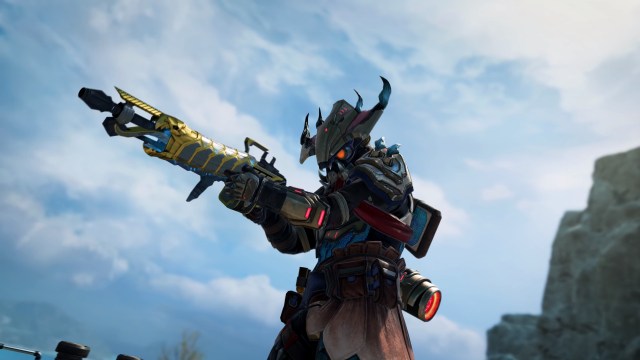
Bloodhound has remained a staple legend in all tiers of play, in pubs, on the ranked ladder, and at the highest level of competition in the Pro League, and for their on-demand information. Compared to the other Recon legends who must work for their information, Bloodhound’s scans give immediate team-wide information.
Tracker and Eye of the Allfather help Bloodhound at all stages of a game, informing them of recent fights, which legend abilities were used, and how long since the tracks first appeared, before scanning to confirm if any teams are still nearby. Bloodhound simply needs to spot a trail or press a button to gain all of this information and can make decisions for where their team should move without slowing down, while all other Recon legends must sit still or slow down to use their passive intel abilities effectively.
Additionally, Bloodhound fights exceptionally well against other top-tier legends, able to grant vision for their entire team through any visual clutter that may be caused by Bangalore and Caustic smokes, explosions from Fuse and Mad Maggie, or any other disorienting effects, making it much easier to coordinate which target to focus in a third party or late game scenario.
Season 20’s legend upgrades system only improved upon Bloodhound’s game plan, further improving upon their scan’s cooldown and highlight timer, alongside granting them Taste of Blood, the only on-demand healing upgrade in the entire for knocking down enemies mid-fight.
No matter how each player chooses to build their Bloodhound perks, all of them provide value in every situation or fight, solidly putting Bloodhound as one of the best Apex characters in season 20 in the S-tier.
Conduit
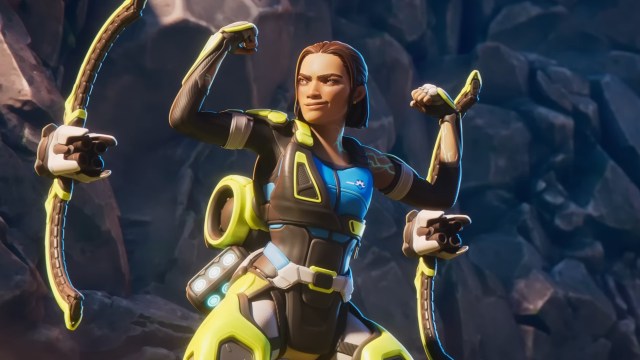
Conduit is the most recent legend added to Apex, and has shined ever since her debut, perfectly geared towards supporting fast offensive pushes, or slowing down the pace of battle and wearing down enemies in a battle of attrition.
Radiant Transfer, despite the recent nerfs, still stands as one of the only forms of instant healing in the entire game, able to help support any weakened teammates with on-demand shields and give herself the same benefit. One charge by itself is enough to swing an entire fight, with the new legend upgrades giving her increased range, or even a second charge to heal up her entire team while on the move.
Energy Barricade is also one of the most effective deterrents in Apex, with effective range and damage that outclasses most Controller legends. Conduit is able to fire off a line of batteries that require almost an entire magazine from most weapons to destroy one, and if enemies try to walk through them, will be slowed, and damaged repeatedly. Conduit can use her ultimate in almost any situation, cutting off enemy escape routes, securing her own team’s safety, or even using the batteries as cover in close quarters, forcing the enemy to waste their time and ammo or be stunned and left as an easy target.
Conduit’s overall effectiveness may have been tuned down since her season 19 release but continues to be a staple in ranked and pro play for her on-demand utility in maintaining a health advantage during a fight, and safely protecting her teammates afterward while resetting between battles.
Horizon

Although Horizon doesn’t have the same level of power due to nerfs from past seasons, her overall kit continues to be one of the best for setting up her teammates. It’s no surprise that Horizon dominates the ranked ecosystem, and continues to be the most picked legend in Masters and Predator lobbies, according to Apex Legends Status.
Gravity Lift is one of the best movement abilities in the entire game for its applicability in any situation. Offensively, Horizon can give the height advantage to her entire team, draw enemy fire, and enable ultimate combos, such as Fuse’s Motherlode. Defensively, Gravity Lift can cut off a door, enable a quick escape, or create space to allow Horizon and her team to safely heal without fear of being pushed.
Horizon’s ultimate, Black Hole, is just as versatile, demanding immediate attention from the enemy team to be destroyed or suffer an incoming onslaught of gunfire, grenades, and abilities. Ash’s Arc Snare, Fuse’s Knuckle Clusters, Caustic’s Nox Gas Grenade, and many more legend abilities benefit greatly from Horizon initiating a fight and potentially locking down multiple enemy players, making her ultimate one of the best in any coordinated situation.
Horizon’s legend upgrades in season 20 are boring but practical, helping her find grenades or decrease ability cooldowns to set up her ultimate game plan. With no legend able to match her kit’s team-wide potential for rotations and fighting power, Horizon sits comfortably in S-Tier.
Revenant

Revenant recently received nerfs in the latest season 20 patch to his upgrades but continues to prove himself as a ranked demon, able to isolate fights and come out on top with his massive health pool thanks to his ultimate ability.
With Forged Shadows providing 75 on-demand recharging shields at the press of a button Revenant can effectively brute force an opening pick with his overwhelming health advantage against a single target, or quickly reset after trading blows, providing time for his teammates to support his next push. Revenant’s legend upgrades further support this playstyle, providing reduced ability cooldowns or even tactical refreshes on knockdowns, further incentivizing Revenant to continue pushing after he finds his first enemy.
Revenant’s kit may be selfish, but no legend can match his overshields from Forged Shadows, making him the perfect entry fragger, and should be accompanied by legends who can help keep him in the fight, or find where the next enemy is located, such as Conduit or Bloodhound.
The only major downside to playing Revenant is his large hitbox, which only gets bigger when activating Forged Shadows, making the assassin an easier target on open maps like Olympus, where the wide open fields make it hard for him to safely pounce when rotating from building to building. Otherwise, Revenant will always get value from his ultimate in a fight, and can practically guarantee that he will always come out on top in a one-on-one duel.
A-tier
Bangalore
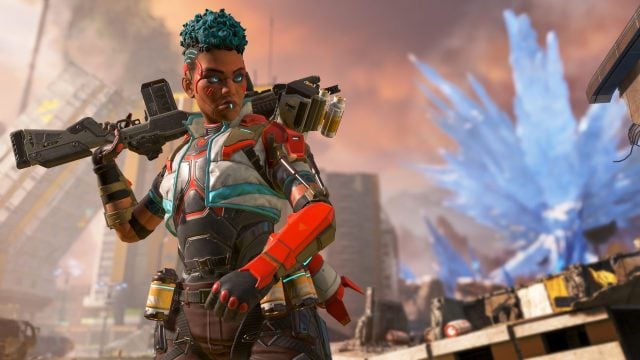
Bangalore has received the biggest nerfs in the Shadow Society patch but continues to find herself at the top of the competitive scene for her well-balanced kit that can fit an offensive or defensive team composition and allows her to pair well with any legend.
Double Time will always provide speed in a fight, allowing her to quickly finish off her targets, or run away to better cover, Smoke Launcher allows her to safely reset and revive teammates, or cut off enemy sightlines leading up to a fight, and Creeping Barrage serves as a powerful initiation tool or deterrent in locking down enemy squads to predictable cover positions, and creating new opportunities for her squad to capitalize on.
Bangalore’s true power lies in her innate synergy with the top-tier legends. A friendly Bloodhound can scan through her smoke, enabling one-sided fights where the enemy can’t effectively see to shoot back. Similarly, Revenant can pick out weak targets and get free Forged Shadows resets with the initiative.
Bangalore’s legend upgrades, while useful, don’t change her core playstyle or give a new win condition for her team, but help solidify her anchor role in the team with decreased cooldowns, allowing her to be flexibly used on all maps, and provide value no matter what legends she faces, putting her in A-tier.
Caustic
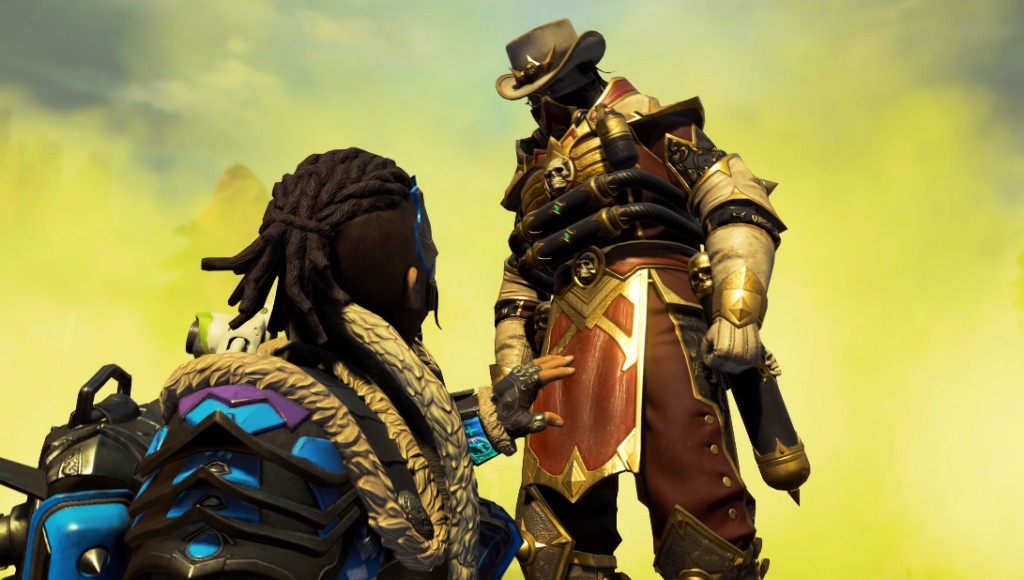
Caustic has always been overshadowed in higher tiers of play by his fellow Controller legend Wattson but finds more immediate and effective use in Ranked, able to control the pace of a fight with his Nox Gas, which has only gotten better with the legend upgrades.
Caustic fills a unique niche among the Controller legends in instant offensive utility, as he can throw both his Nox Gas Traps and Nox Gas Grenade to create damaging smokescreens to all legends but him. The new legend upgrades increase his versatility in throw range or area of effect, making it even easier for Caustic to set up his traps mid-fight, or flush out bunkered-down enemies with a single button.
Caustic’s only main weaknesses are his big hitbox, and map choice, as King’s Canyon or World’s Edge let him truly shine, with the abundance of buildings to choose his optimal setup location. Maps with more open fields like Olympus and Broken Moon can cause problems for the Toxic Trapper, but Caustic can still find value through the smoke he creates, putting him in A-tier.
Gibraltar
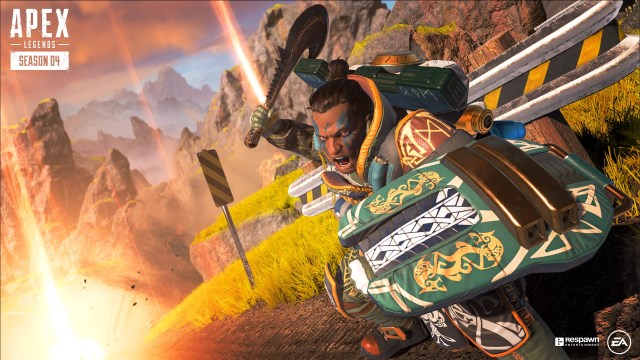
Gibraltar has slowly been rising in the pick rates with small buffs, but season 20’s legend upgrades have provided the Shielded Fortress more playstyle variety in being an aggressive pushing powerhouse, or an unshakeable protector.
Dome of Protection has always been Gibraltar’s most important ability, able to create an area of safety for his entire team to heal up defensively, and even resurrect his allies with more health thanks to the Fresh Start upgrade, or toss it forwards and force a bubble fight with Shots Shots Shots, allowing him to reload his entire shotgun’s clip if Gibraltar gets a down.
Orbital Bombardment did not receive any changes in the past seasons, but continues to serve as a tide-turning ultimate that can secure knockdowns or confirm kills, all while Gibraltar’s team stays in the safety of his bubble, forcing his enemies to seek new shelter or push into his bubble, which can also be tuned with legend upgrades to last longer, or smaller with a shorter cooldown.
However, despite Gibrlatar’s immediate defensive strengths, he must play around Dome of Protection’s range and can be directly countered by Mad Maggie’s Riot Drill and Wrecking Ball, or Crypto’s EMP. Area of effect abilities like Ash’s Arc Snare or Fuse’s Motherlode can also keep Gibraltar stuck in place until his bubble expires, disrupting what should be a temporary safe haven.
Gibraltar serves his role well as a mobile shield and offers both offensive and defensive utility, but his entire gameplan revolves around Dome of Protection, and creative squads can play around or even take advantage of bad bubble placements, putting Gibraltar in A-tier.
Mad Maggie
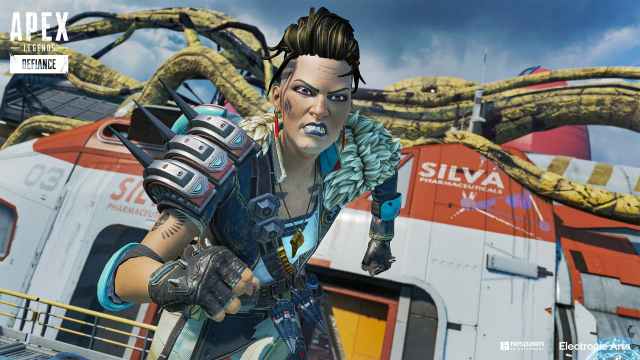
Just like her Salvonian counterpart, Mad Maggie and Fuse both offer direct damage in their kits, but while Fuse prefers to rain down grenades from a distance, Mad Maggie enables a much more aggressive style, running down enemies with unmatched speed and close-range aggression.
Maggie’s passive, Warlord’s Ire, is the entire cornerstone of her kit, as any damage that she deals, through guns, grenades, or abilities, will highlight enemies, alongside moving faster with shotguns, allowing her to single out already weakened targets and close the gap. This speed buff can stack with Wrecking Ball’s speed pads, allowing Maggie to compete with Octane at top speed, and makes her one of the deadliest initiators when her team can find the smallest advantages to push on.
Riot Drill and Wrecking Ball both serve to displace bunkered-down enemies in cover, with Maggie’s legend upgrades only further amplifying the area of effect and damage potential of both abilities. Wrecking Ball’s unique niche of destroying deployable abilities like Gibraltar’s Dome of Protection and the majority of Controller legends’ defensive structures allows her to disrupt enemy attempts to reset and heal, but the unpredictability of Wrecking Ball’s bounces and explosion can cause inconsistency problems for Maggie and her team.
Overall, Maggie serves as a great initiator for ranked teams, able to displace enemies and confirm knockdowns with massive speed, while granting the same speed boost to her teammates up to push alongside her and finish off any squads hit with her abilities.
Pathfinder
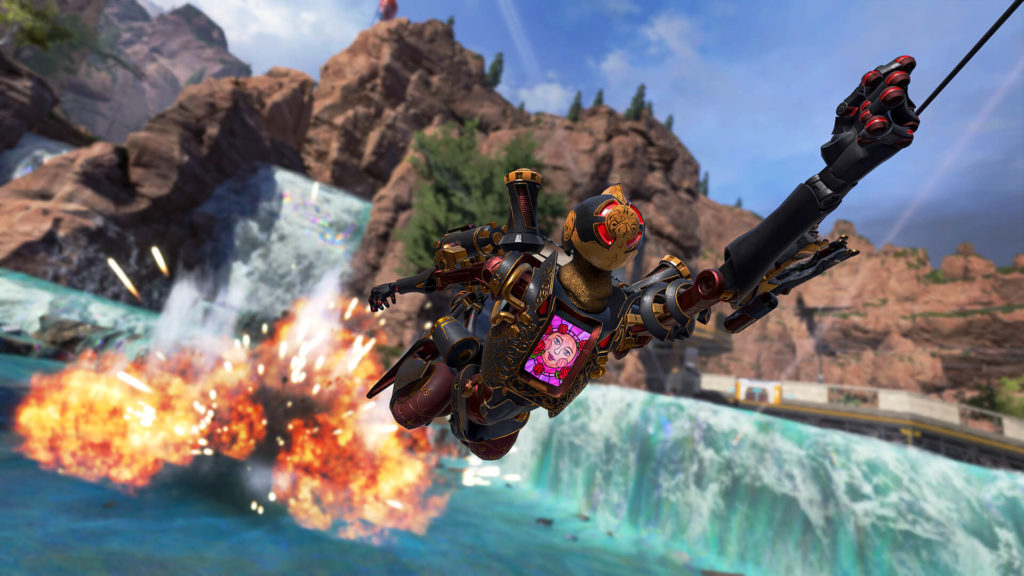
Pathfinder, true to his name as the Forward Scout, was the best legend on release for encouraging team rotations with his ziplines and aggressive pushes from his Grappling Hook. However, as safer rotation options like Ash’s Phase Breach and Catalyst’s Dark Veil were introduced to the game, Pathfinder found less use. Still, everything has considerably changed with the season 20 legend upgrades.
Pathfinder’s greatest strengths lie in his Zipline Gun ultimate and Insider Knowledge passive, allowing him to potentially chain multiple zipline rotations together for his team to follow. While his level two legend upgrades may seem underwhelming in scanning Survey Beacons or Ring Consoles, they allow Pathfinder’s team to gain extra EVO points, and fill in the class role if his squad is missing a Recon or Controller legend.
Although Zipline Zen, one of Pathfinder’s level three upgrades provides damage reduction while on his ziplines for a limited time, the benefit does not affect teammates, and the predictable direction and speed of ziplines make them a risky tool in endgame situations, rather than a guaranteed team-wide escape tool.
However, despite how obvious Pathfinder appears when deploying and riding a zipline, his ability to get the next ring or enemy information, and then effectively follow up with movement utility before and during combat with his Grappling Hook make Pathfinder a difficult target to pin down. Pathfinder excels in many situations and most maps, all while enabling his team to keep up with him at all times, putting him in A-tier.
Valkyrie
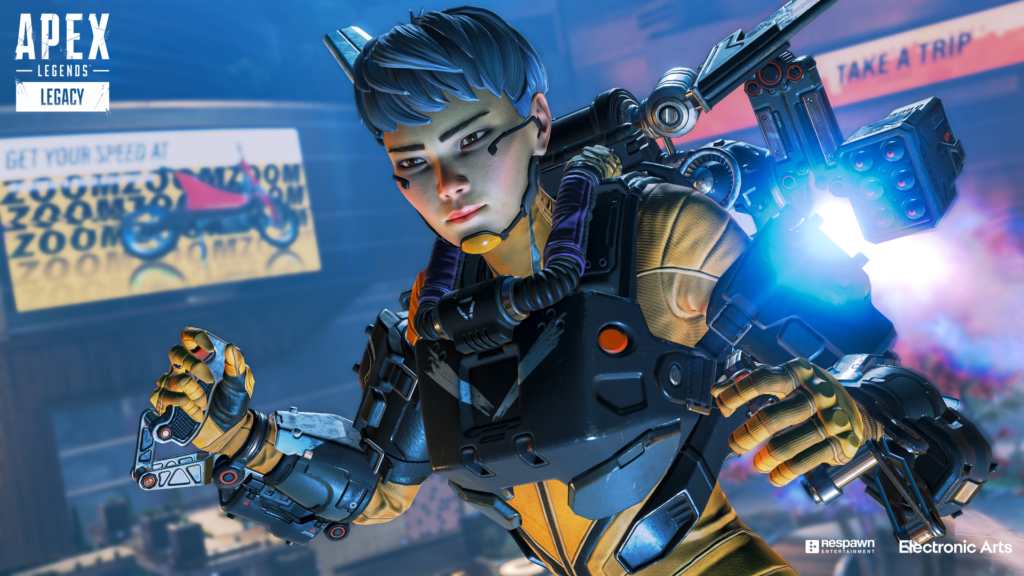
When Valkyrie was initially released, she immediately became the most popular team anchor, able to safely get vertical height to cover her teammates, offered damage and a stun from her tactical, and provided map-wide rotations or free fight escapes with her ultimate. With the introduction of the Evac Tower and numerous nerfs, Valkyrie fell from grace, but can still find value in season 20 of Apex Legends.
Valkyrie’s on-demand vertical mobility from her VTOL Jets passive, plus her Missile Swarm tactical ability give her one of the best offensive kits when fighting, allowing her to easily outmaneuver the majority of legends and provide damaging and stunning utility to her teammates from far away.
Skyward Dive does not go as high as an Evac Tower but retains its unique advantage over the survival item in being faster to rise and less telegraphed. Enemies anticipating a rotation may be able to shoot down an Evac Tower or players riding them before they reach the top, but a Valkyrie ultimate is harder to track and shoot down, and can also make room for an extra Mobile Respawn Beacon or Heat Shield in the squad’s inventory instead.
Valkyrie’s kit may have been nerfed heavily in past seasons, but her legend upgrades allow her to reach her old heights again and still allow her to retain her unique team role. Afterburners give Skyward Dive its old launch height, which sends her team further than Evac Towers, while Aerial Expert and Full Tank give Valkyrie her old passive mobility and fuel back when taken together, providing outplay potential and utility while in fights.
Valkyrie may not be the most dominant Skirmisher legend anymore, but her ultimate provides value for team compositions that lack mobility and is easily seen as a must-pick for maps with large verticality and choke points, such as Storm Point. Valkyrie is still a solid legend, and lands in A-tier for the rotation value she gives to her team.
Wattson

Wattson is probably the best Controller legend to use defensively and has always been viewed as a competitive powerhouse, able to shut down most offensive abilities without effort and can lock down entire buildings by herself. Her entire kit synergizes with itself, and her status as a Controller legend signals to her team to find the last ring, set it up early, and hunker down with safety and even shield regeneration.
However, while all other Controller legends can toss or deploy their creations on the move, Wattson is naturally slower when deploying her Perimeter Security or charging her Interception Pylon with an ultimate accelerant to activate her passive. Without any accelerants, Wattson’s immediate value decreases sharply, and can struggle to keep up and properly set up her defensive grid with fast-rotating teammates, especially in Ranked.
However, when Wattson is given a chance to pick out her building or cover and set up her Pylon, she completely outclasses her fellow Controller legends. With the new legend upgrades, Wattson can even cover more ground than before with two Pylons at the same time, or offer even more shield regen for her team, allowing them to poke for more EVO damage to snowball the last ring fights. Her strengths greatly outweigh her weaknesses, putting Wattson in A-Tier.
Wraith
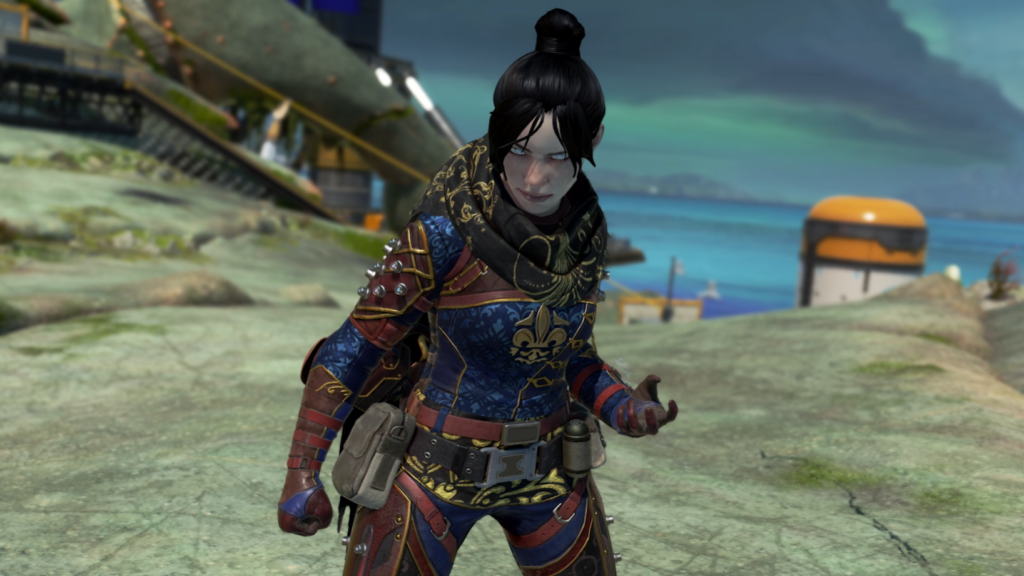
Wraith mains can rejoice at the season 20 legend upgrades which bring back the Void Skirmisher to a portion of her original power levels. While other Skirmisher legends prioritize fast and aggressive mobility, Wraith’s kit requires charging and setup but guarantees safety for herself and her team, invaluable traits in any situation.
Into the Void has been one of the most controversial abilities since season one, and despite the repeated nerfs in past seasons, legend upgrades offer a chance for Wraith to return as a safe scouter when inspecting POIs, or as an effective entry fragger with a guaranteed escape that activates even quicker with Fast Phase. Additionally, Wraith can act as the team’s recon legend with Sixth Sense, as she can call out when a new squad is nearby, a much faster and more reliable notification than her standard Voices from the Void passive.
Wraith’s usefulness also fluctuates between each map, as locations with multiple open fields like Olympus and Broken Moon raise the value of Dimensional Rift. With the popularity of aggressive team compositions and Skirmisher legends, Wraith offers a safety net for herself and her team in rotations that no legend can match, putting her in A Tier.
B-tier
Ash
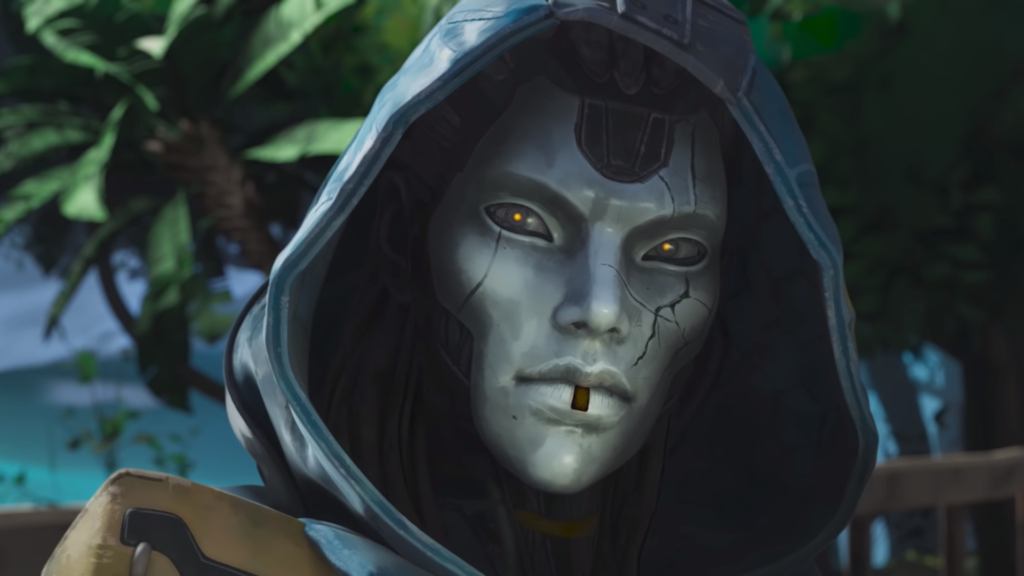
Ash has been seen as an under-tuned legend by the general Apex community and while she is a niche pick in the Pro League, Ash’s kit is very suitable for the Ranked ladder, able to serve with her global information and one of the best initiation abilities in her ultimate.
Ash’s passive, Marked For Death, may not find much use for the active tracking component unless she was third-partied, but the ability to see where any eliminated squad is on the map at all times helps inform her team to make smart decisions on where to rotate, or potentially pick off teams still healing after a skirmish.
Arc Snare has been seen as one of the most inconsistent tactical abilities due to its slow speed and difficulty of use, but with legend upgrades, Ash can now use her tactical more freely with an extra charge, or serve as a defensive anchor in a fight, locking down a door or hallway for the entire duration of 24 seconds with the Greedy Snare upgrade, giving her a wider role in fights rather than hoping for a lucky snare hit.
Phase Breach is the highlight of Ash’s kit, and although it doesn’t go as far as other mobility options like Octane’s Jump Pad or Wraith’s Dimensional Rift, the value of having an instant and safe teleport for her team is invaluable in escaping third parties or otherwise deadly situations, like Horizon’s Black Hole. However, the short range in comparison to other legends’ abilities can make Ash struggle in wide-open maps like Olympus to find a safe place to Phase Breach.
Ash’s kit is much more specialized than other Assault legends, but her unique skillset struggles to consistently be useful, whereas other legends can find use in all three parts of their kit for most combat encounters. With the right maps, Ash can shine, but the Incisive Instigator falls into B-Tier.
Catalyst
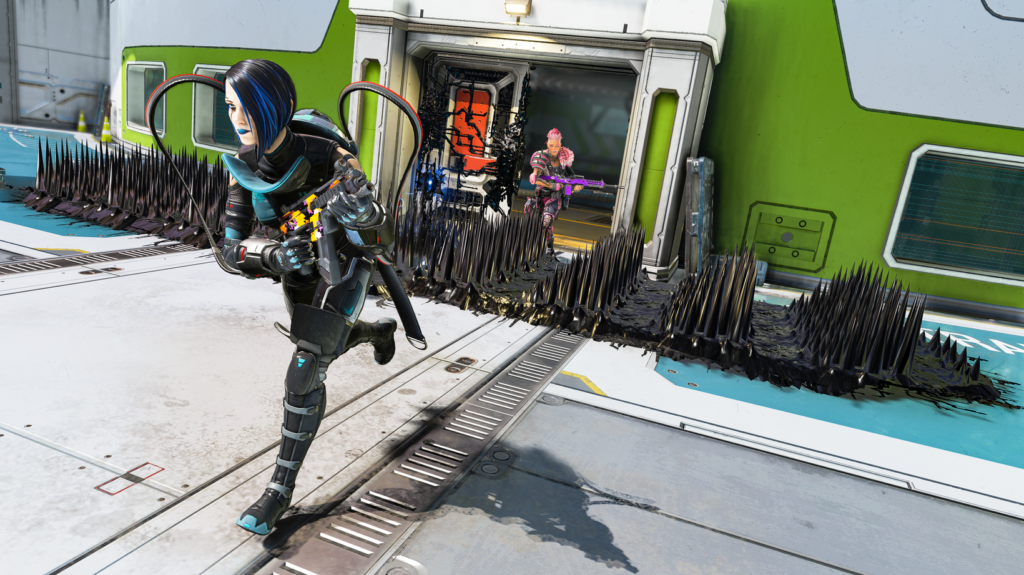
Just like Seer, the casual and competitive community immediately found the versatility and potential in Catalyst‘s kit when she first released, leading to constant nerfs and fixes across multiple seasons, due to how oppressive her abilities were and and how often she could use them.
Catalyst’s role within the team is to find Ring Consoles as the team Controller, then find an area or building to set up in, taking advantage of her passive to reinforce or rebuild doors, alongside Piercing Spikes to cut off additional entry points. Her true power lies in Dark Veil, which cuts off sightlines, slows and blinds enemies who go through it, and even stops recon scans from going through it, allowing her team to section off an area to fight in or create a safe rotation path for her squad to take.
However, Catalyst’s utility requires her team to be patient and work around her defensive playstyle. Legends with vertical mobility like Pathfinder or Valkyrie can easily bypass most of her kit, and make it hard for her to keep up with aggressive teammates in ranked.
Catalyst is still seen as one of the best legends to take to the endgame, able to initiate a safe fight on her own terms with Dark Veil, but must play a safer and slower style to guarantee an endgame scenario. Catalyst is still an amazing Controller, but should properly have a team composition built with her in mind. B-tier.
Crypto
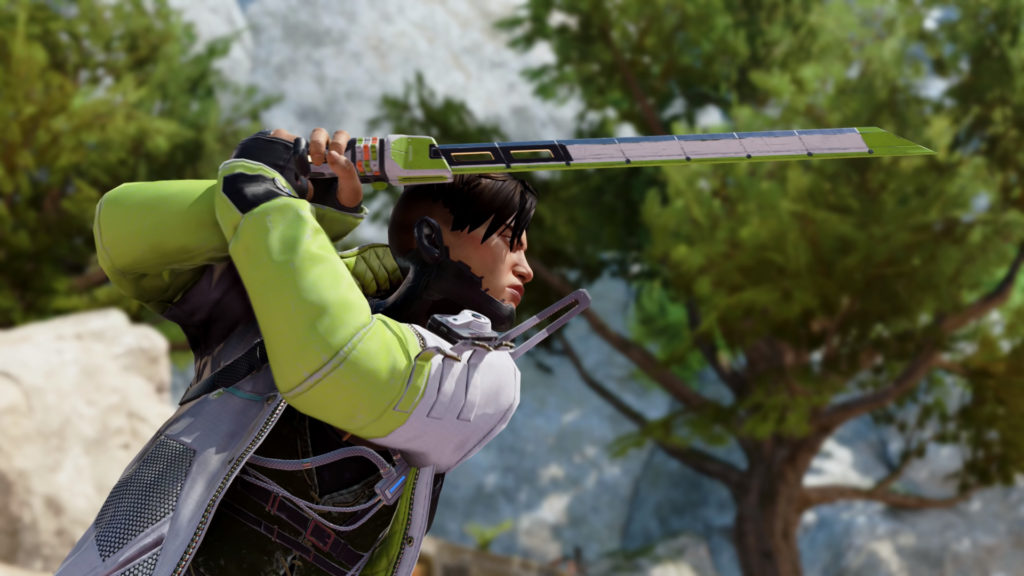
Crypto represents something of a conundrum for Apex: He’s quite strong in many ways, but his necessary playstyle of hanging back and piloting his drone, often while his teammates fight, makes him a situational pick and a character that’s not fun to play for many.
On paper, Crypto is one of Apex’s strongest legends. He can safely scan Recon Beacons for information and EVO points, has an infinite duration scan with his drone if not destroyed, can effectively counter all Controller legends, and initiate a fight with up to 150 unavoidable damage from his EMP.
However, to gain any of these advantages, he must sit still and pilot his drone manually, slowing him down and potentially leaving his teammates at a numbers disadvantage if he sits still for too long. Additionally, if Crypto gets too aggressive with his drone and it is destroyed, he loses access to his entire kit for 40 seconds, an easy mistake to make that could decide the entire outcome of a fight if he fails to set off the EMP beforehand.
Crypto’s wide utility before fights and the ability to start a fight with guaranteed shield advantages give him great strengths on most teams, but he is often held back by the slow, methodical style of gameplay, and the teammates he’s paired up with if players choose to play him on ranked. Crypto’s highest potential can be realized in a coordinated team, but when picked without regard for team composition, can struggle to take full advantage of his abilities, putting him solidly in B-tier.
Fuse
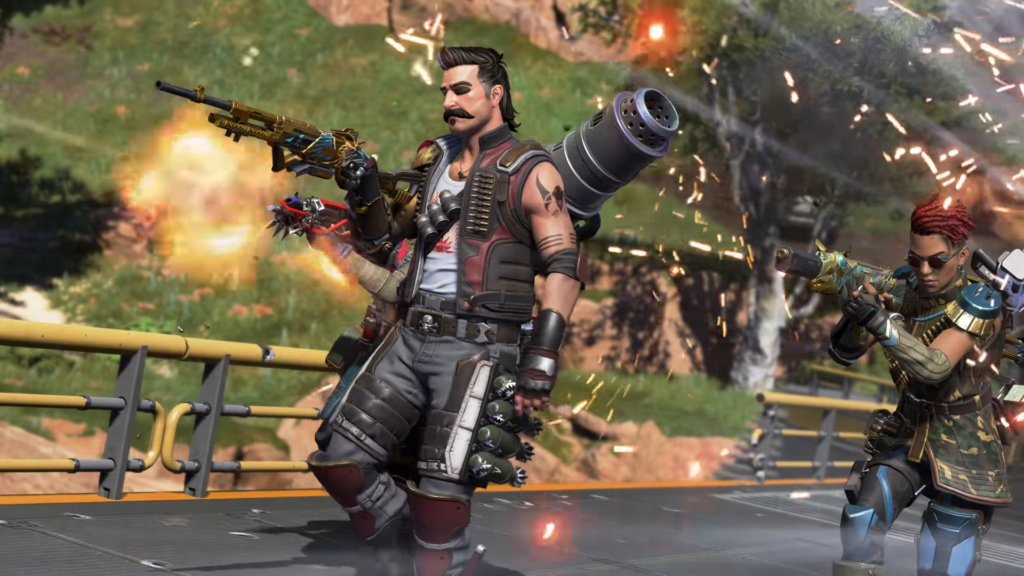
Fuse is a beloved character for his simple-to-understand and effective kit, able to deal constant damage from far away with all three of his abilities, and force enemies to play out of cover, giving his team the room to take an advantageous fight.
His best ability is his tactical, Knuckle Cluster, which functions as a sticky grenade that can force enemies to move out of cover to avoid its high area of effect damage, giving Fuse an invaluable late-game role in flushing out rats or depleting enemy healing resources at the small cost of a tactical cooldown.
Fuse’s ultimate, The Motherlode, allows him to lock down enemies who are defending a building or bunker, marking them like a recon scan for the entire time they stay in the ring of fire. However, the Motherlode takes time to travel and properly deploy, and with the current meta of high-mobility legends or bad luck with the terrain the Motherlode’s fire ring lands on, can easily be escaped without the enemies taking damage or using abilities, making its value inconsistent from fight to fight.
Despite his impressive range, Fuse can struggle to follow up on his grenade damage as he lacks a mobility tool, unless he takes a specific legend upgrade, requiring an aggressive team composition to finish off any weakened enemies he finds with his offensive kit, but a kit with three different damaging abilities lands Fuse in B-tier.
Lifeline
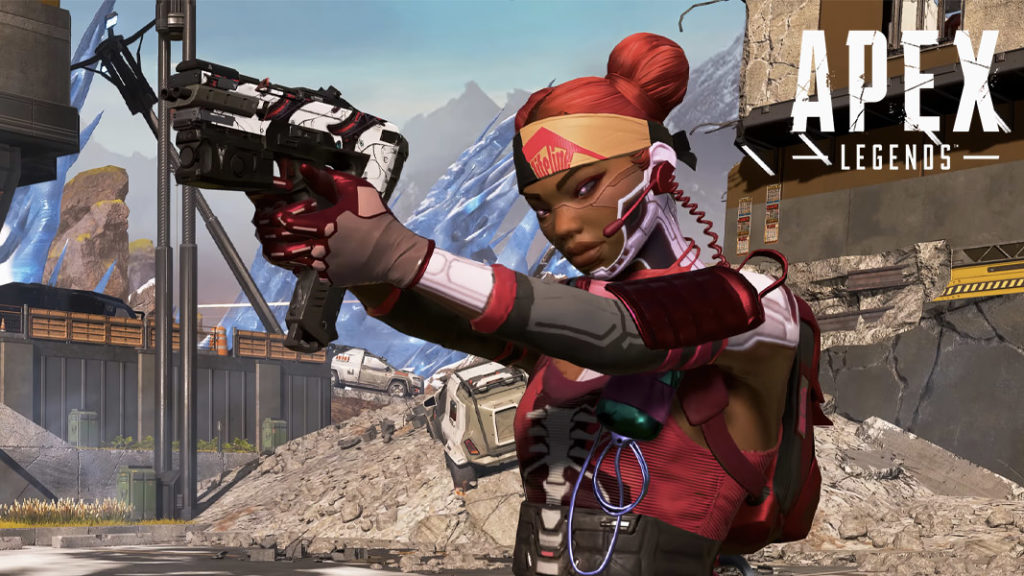
Lifeline has surged in popularity with season 20’s legend perks, as many new and veteran players flocked to the Combat Medic for her legend upgrades, which completely changed how the Combat Medic and her team could gear up before each fight, and how aggressive Lifeline could get while playing her role as the team’s Support legend.
Lifeline revolves around her Combat Revive and D.O.C. Heal Drone, looking to defend her teammates while her drone resurrects them, before rapidly patching them up to get back into the fight. The level two legend upgrades promote two different playstyles, using D.O.C. proactively during a fight with a greatly reduced cooldown to maintain a health advantage, or increasing her revive speed, forcing enemies to directly push towards Lifeline to convert their numbers advantage.
The level three upgrades are where Lifeline truly gets to shine, as the new Gift Wrapped choice spawns golden gear in her next care package, alongside multiple healing items, giving her team a guaranteed loot advantage before taking their next fight. This could potentially result in a gold knockdown shield, allowing Lifeline to resurrect her teammates with even more health, or a gold backpack to free up space for additional grenades in a teammate’s inventory.
The alternate level three upgrade choice, Last Stand, gives Lifeline a one-time use self-revive, like the old gold knockdown shield, and allows the Support legend to fight right beside her team without worrying about survival. A Lifeline can push more confidently in a fight, knowing that even if she goes down first, with good team coordination to trade with her opponent, her team will always walk away with a numbers advantage.
Lifeline’s presence on a team will always demand immediate attention from both sides to attack or defend her and allows players at all skill levels to provide healing utility without sacrificing their ability to shoot back. However, the majority of her value only comes from when somebody on her team goes down when other legends could be picked to prevent this entirely, putting her in B-tier.
Loba

Loba has made off like a bandit with the new legend upgrades and can serve a new role in the team as an effective flanker, thanks to her tactical buffs. However, her main role of supplying her team with a gear advantage has been massively impacted by the changes to legend armor, massively changing how players will use her ultimate.
Loba’s tactical, Burglar’s Best Friend, allows her to take the offensive flanking positions, or safely escape from fights, living to fight another day and craft her teammates’ banners as part of the Support class perks. With the right legend perks, Loba can further extend the range and reduce its cooldown, allowing her to effectively keep up with Skirmisher legends in mobility.
Most players will pick Loba for her ultimate ability, Black Market Boutique, as it allows her team to safely collect floor loot, death boxes, or even Supply Care Packages from a distance, guaranteeing ammo and each player’s personal choice of weapons or consumables. Season 20’s introduction of EVO caches, which gives a full level up upon use, can also be looted by Loba and her ultimate, making it even better.
Loba’s utility exclusively lies in speeding up her team’s rotations and guaranteeing better attachments and consumables, but when directly compared to other Support legends, doesn’t offer anything else in fights, putting her in B-tier.
Newcastle

Newcastle continues to shine as the pinnacle of the Support role, able to turn any trade into a favorable numbers advantage during a fight, with his legend perks now able to better bolster the health of his deployables, and even resurrect his teammates with increased health.
The Heroic Defender’s greatest asset is his Ultimate ability, Castle Wall, as it allows him to follow behind his more mobile teammates, such as Pathfinder or Valkyrie, and immediately change the entire structure of a battle. Even if his teammate goes down, Newcastle’s Retrieve the Wounded passive gives him much more flexibility in protecting himself and guaranteeing a resurrection, especially in ranked where enemies must coordinate to shutdown Newcastle before he can reset for his teammates.
Newcastle’s main weakness is his need to set up his abilities, as Mobile Shield and Castle Wall both require time to properly deploy, and suffer against area-of-effect damage sources, such as grenades, or Mad Maggie’s drills. Newcastle’s ability to make terrain and new cover to play from are a great asset, but still have plenty of counterplay against them, especially against any of the Assault legends.
Newcastle’s value revolves around guaranteeing his teammates’ resurrection mid-fight but must have a composition built around him to properly succeed. An uncoordinated team with a Newcastle can struggle to play around each other and his resurrection, making him a more composition-situational legend in the B-tier.
Rampart
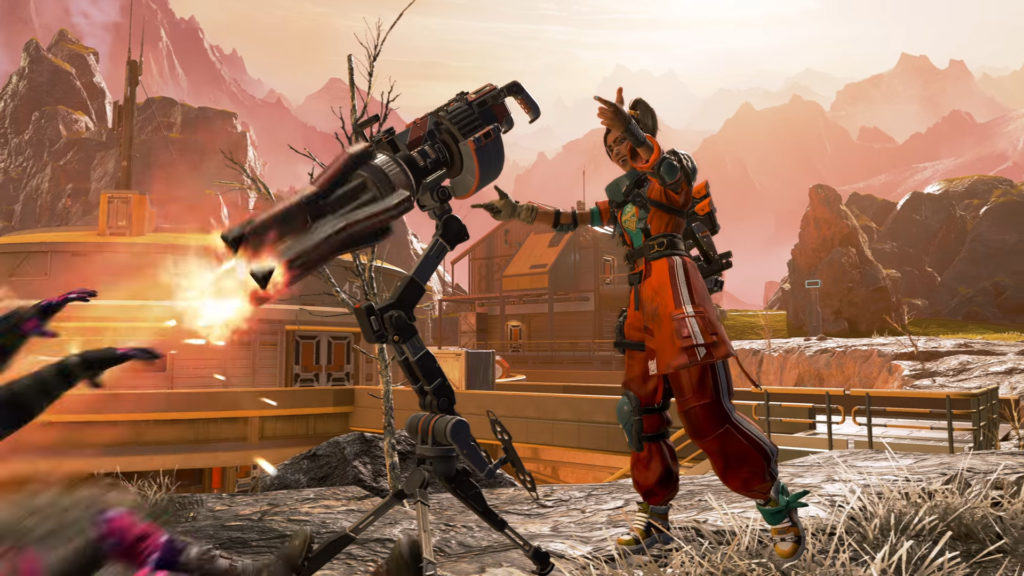
Rampart’s biggest strength is the overwhelming defensive firepower she can offer to her entire team, but must devote the most time near her defenses out of all legends in the Controller class, and would rather stay in one place instead of roaming around the map, a playstyle that does not fit well with the majority of players.
Rampart’s passive and tactical abilities reward looting POIs for LMGs and finding the best buildings to fortify with Amped Cover, but must deliberately stay behind her cover instead of following her team to make the most out of her defenses, a strategy that struggles to find results due to the massive popularity of Skirmisher legends, who all have one or more movement abilities. However, if Rampart is able to survive until the final ring, she becomes one of the most powerful legends, able to slowly push up with her walls and win any damage trade with complete safety.
Rampart’s ultimate, the Mobile Minigun Shiela, is only rivaled by the Kraber for its lethality, possessing the fastest fire rate and damage per second out of any gun, but was very slow to windup and made Rampart an easy target while she fired it. However, season 20 has massively improved Shiela with perks to decrease its cooldown and improve the spin-up time and handling while firing, making it a viable weapon for pushing offensively instead of having to spin up preemptively behind cover.
Rampart’s value also heavily depends on the map and how strong LMGs are in the weapon meta, as she benefits greatly from vertical maps like Olympus and Storm Point, where she can create a safe bunker for her squad on the high ground. However, her slower setup nature when compared to other Controller legends makes it harder for her to keep up in the current ranked environment, putting her in B-tier.
C-tier
Ballistic
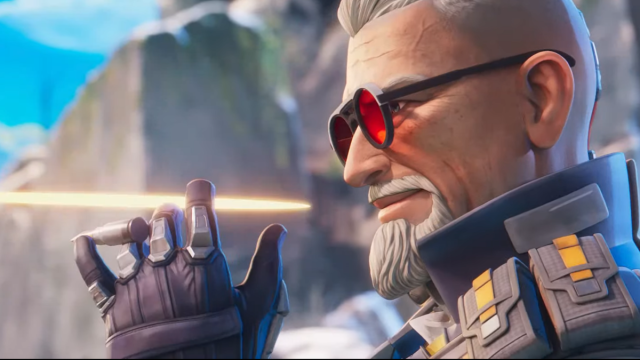
Ballistic’s role in a squad is to enable his team to make aggressive pushes, capitalizing on the infinite ammo, increased movement, and reload speed he gives to his entire team, alongside the sling weapon that Ballistic upgrades to gold during his ultimate ability.
Sling’s extra weapon slot allows Ballistic to be more versatile in fights, as he can carry weapons for any situation he might encounter, and can even gain rare attachments for guns that need to be fully kitted to reach their potential, such as upgrading a Devotion to gold with his ultimate for a Turbocharger.
His tactical, Whistler, can cover a small area or lock onto an enemy, causing light damage, and forcing the enemy to stop firing any of their weapons, or take 30 damage and be disabled from firing any further for one second. While the ability seems strong on paper, and the majority of his legend upgrades improve Whistler’s duration or capability, the ability cannot down an enemy, only reduce them to one health, and can easily be dodged by ducking into cover even after it has locked onto an enemy. Whistler requires multiple conditions to affect an enemy and deal damage, making the ability lackluster when compared to other Assault legends, such as Fuse’s Knuckle Cluster.
Ballistic’s ultimate, Tempest, can find great value in boosting his entire team to take a fight, but doesn’t provide any direct damage, and Ballistic’s squad must still win the teamfight through skill alone. With no way to stun, slow down, or trap the enemies like with Bangalore’s Rolling Thunder or Fuse’s Motherload, Ballistic struggles to properly engage a fight if he’s fighting a bunkered down enemy, and doesn’t offer much more versatility in his kit.
Overall, Ballistic can find great value for players who are confident in their fighting, but the Refined Gunslinger only offers combat utility, and with his lackluster tactical ability, Ballistic finds himself in C-Tier.
Mirage
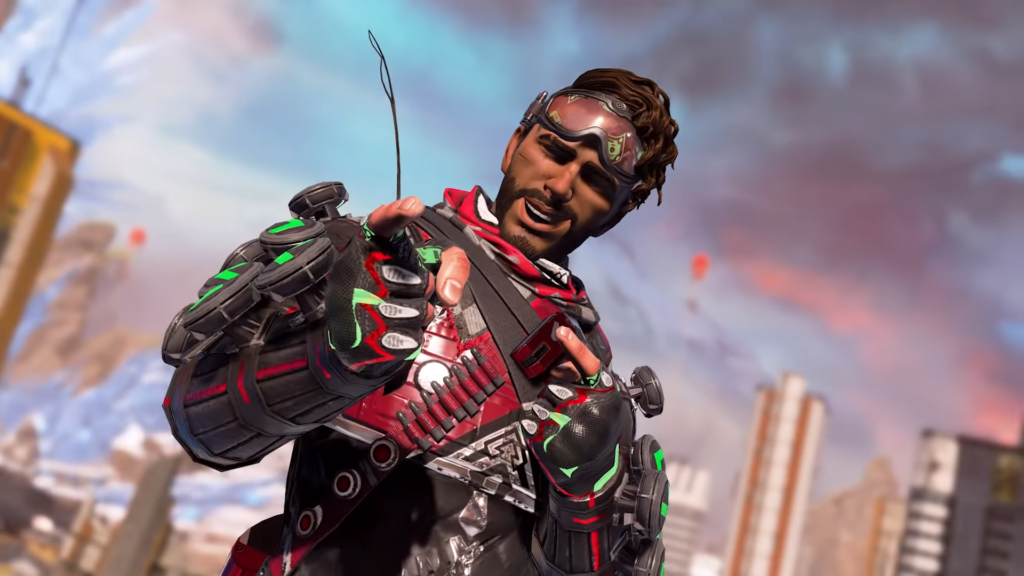
Mirage can be one of the most powerful enemies to fight against when it’s a 1v1 situation, able to cause some of the most effective mind games, but these tricks lose value in standard team fights. When it comes to Support legends, Mirage finds value in drawing fire away from his teammates, but not much else.
The season 20 legend upgrades benefit Mirage’s kit but don’t push his abilities to a new height, instead helping him with cooldowns for each of his decoys. While he can get more information on enemy positions and draw out abilities, his decoys only ping locations instead of live tracking enemies from Recon legends’ scans, which makes it harder to accurately follow their movements and advance on the information.
Mirage’s newest influx of decoys can draw attention away from his team, but can also draw just as much attention from unwanted third parties. With his greatest value still lying in his invisible resurrection, Mirage must rely on tricky mind games and fake-outs that might not work against all enemies, making him a C-tier legend.
Octane
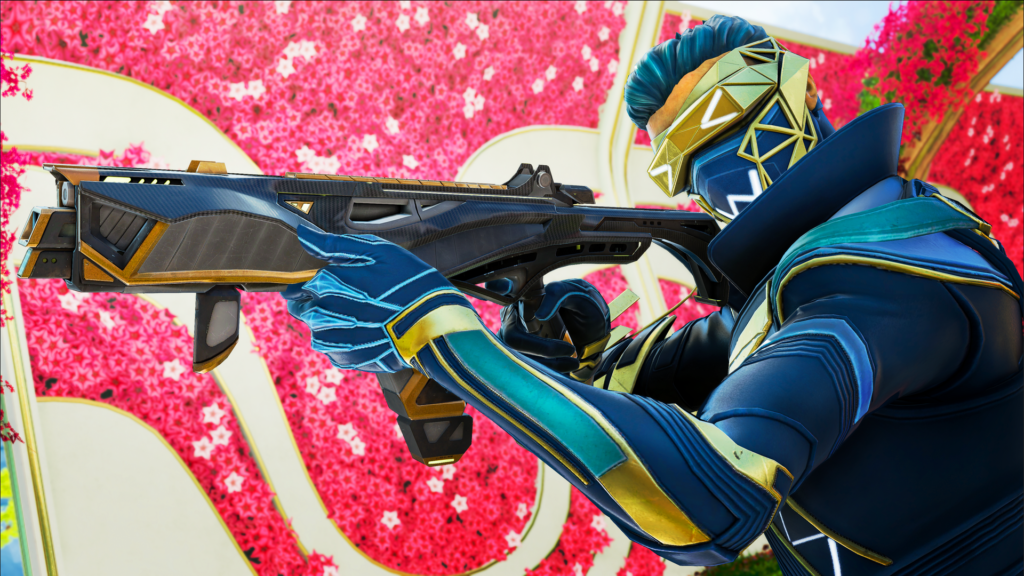
Ever since his release, Octane has always been one of the most popular legends for his simple-to-understand ability kit and game plan, despite not seeing any play in the Pro League. His biggest strength of unmatched speed is also his biggest weakness, as his entire kit revolves selfishly around himself.
Octane’s Stim and Swift Mend allow him to rush into fights at the cost of health, and while he does provide a way for his team to rotate with his Launch Pad ultimate, Octane will always get the most distance while on Stim and can force fast and unexpected one-vs-one situations. However, with no offensive utility to compliment his speed, Octane players can easily struggle to find an opening pick against Controller legends if they run into Caustic’s Gas Traps, or Wattson’s Perimeter Security, which shut down his main advantage of unexpected flanking speed.
Octane’s legend upgrades continue to reinforce this glass cannon playstyle, and while he can take an additional Launch Pad for his team, the ultimate is useful for its speed, but not its safety when directly compared to other options like Wraith’s Dimensional Rift or Ash’s Phase Breach. Octane does one job, and he does it well, but doesn’t provide much more value for his team, putting him in C-tier for his selfishness and lack of legend synergy.
Seer
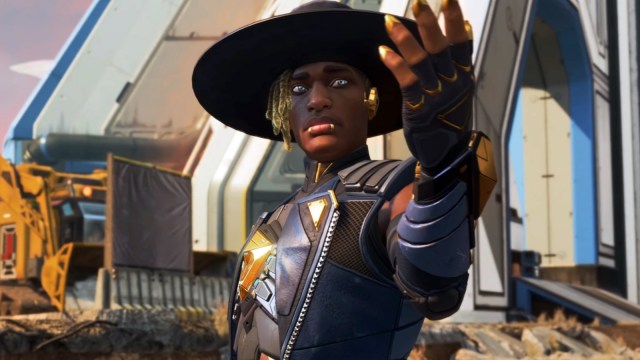
When Seer first debuted in season 10, he was immediately seen by the casual and competitive community as one of the most overpowered legends to ever enter the Apex Games, single-handedly creating a meta and prompting a response from Respawn’s balance team. Ten seasons and multiple nerfs later, Seer is only a fraction of his former self, now serving a completely new role past tracking enemies.
Seer’s team value came from quickly scanning with his passive, before deploying his tactical and ultimate to single out and rush down an unprepared enemy. Focus of Attention was initially used to cancel all actions when hitting an enemy, but now slows and silences only abilities, while Exhibit lost over half of its throw range, forcing Seer to play much closer to his enemies to gain value from his kit.
While his abilities are still powerful in a direct confrontation, season 20 offers multiple game-changing upgrades for many legends, while all of Seer’s upgrades only revert the nerfs to his kit, such as Exhibit’s throw range. Seer can still be an annoyance in shutting down enemies but must play more aggressively to get the same value as his release state, putting him in C-tier, due to the increased risks he must take, and the effort needed when compared to other Recon legends like Bloodhound and their legend upgrades.
Vantage
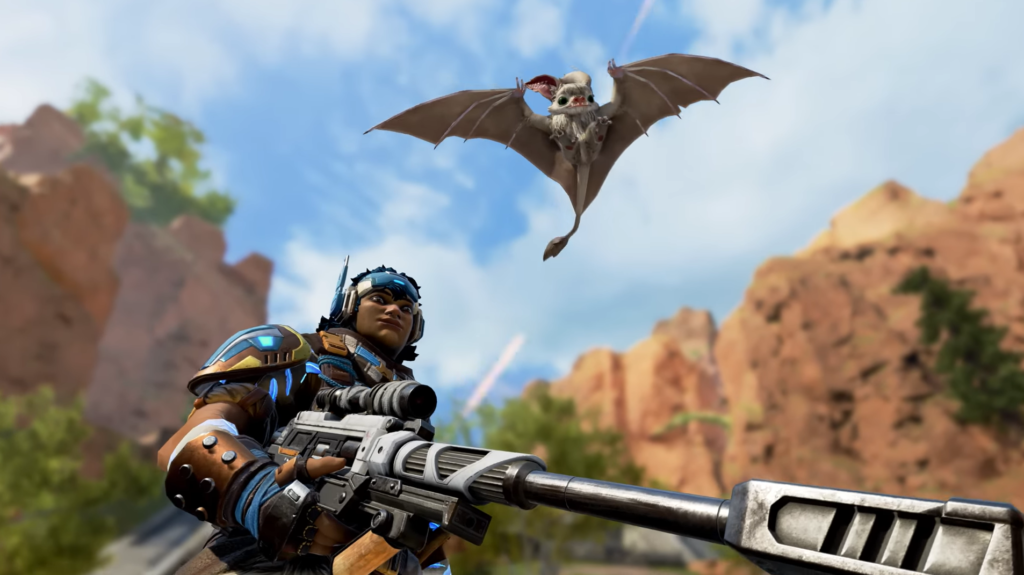
Vantage still holds a unique niche in having one of the highest damage bursts, able to deal over 150 damage with two body shots alone from Sniper’s Mark. However, where she struggles is information utility in comparison to the rest of the Recon class, and the literal hit-or-miss nature of her ultimate ability.
Vantage’s passive allows her to see how many enemies are left on a team, and the exact level of their shields, but capitalizing on that information can sacrifice crucial early game time in collecting EVO caches or activating Recon Beacons for her team, and even if Vantage has the ability to land a shot with Sniper’s Mark, the slow deploy and initiation speed of Echo Location alongside the potential lack of movement abilities from her teammates to immediately push the advantage can easily nullify her biggest strength.
Vantage’s usefulness can also depend on the current map, as POIs with multiple buildings to break sightlines like on King’s Canyon or Broken Moon can ruin her ability to single out weaker enemies during a fight. Vantage gest unique recon information from her passive, but must work the hardest to take advantage of it, putting her as the lowest in her class at C-tier.


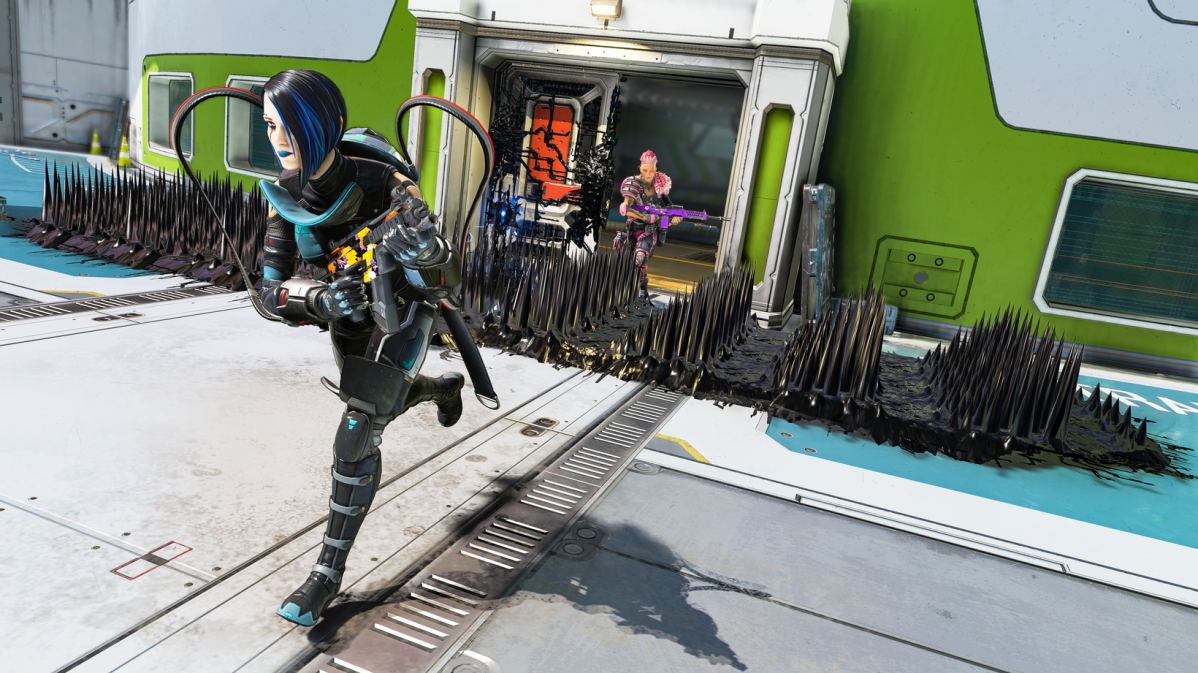
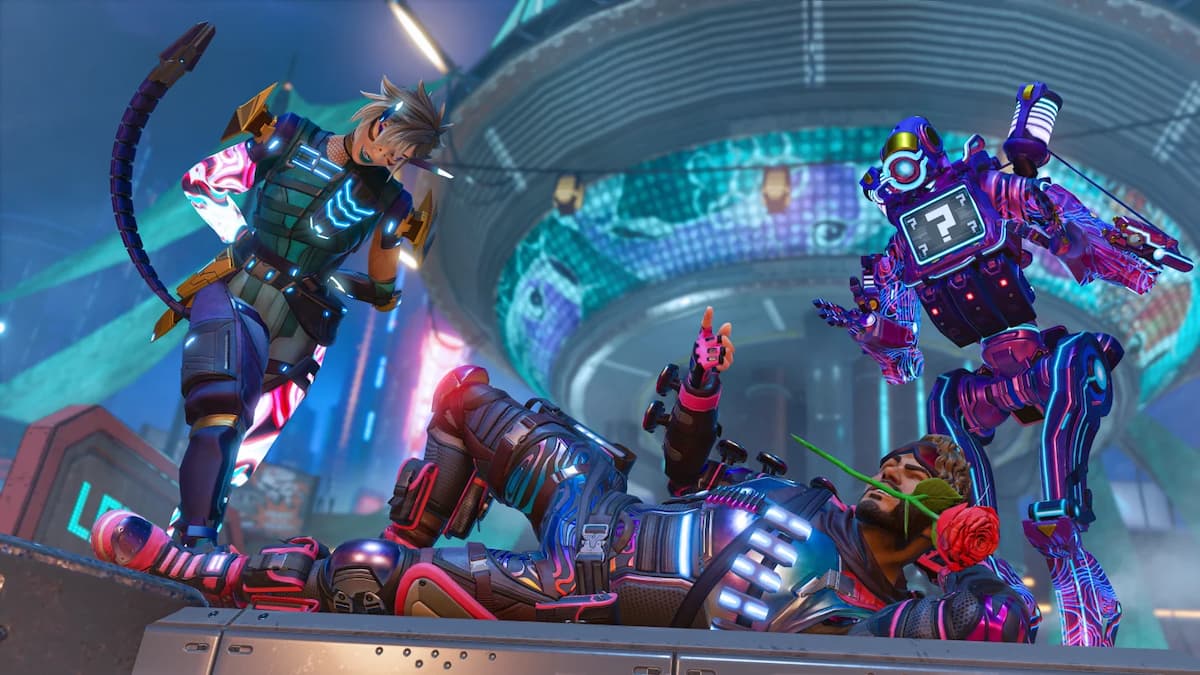

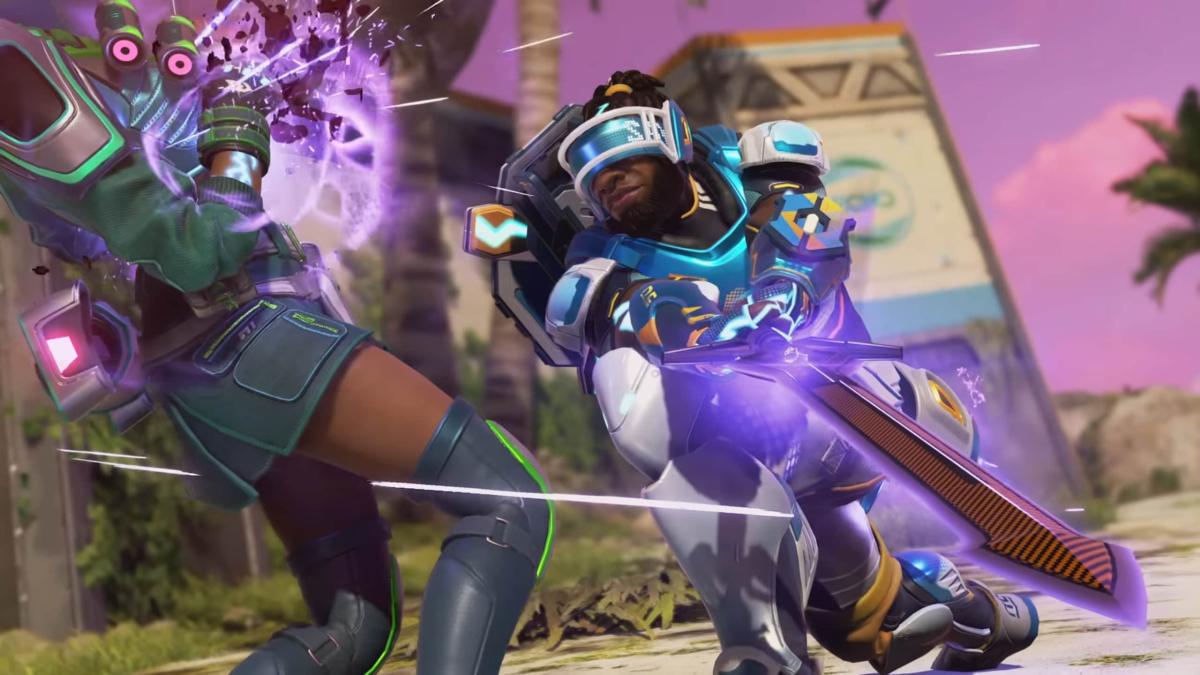

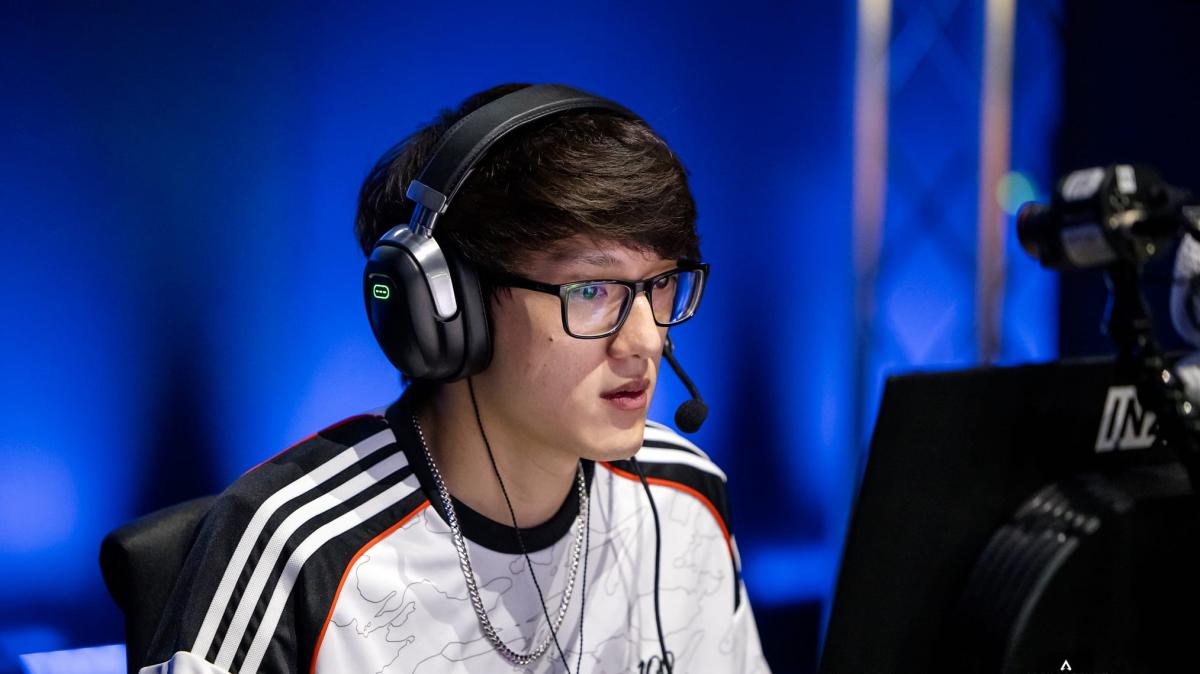
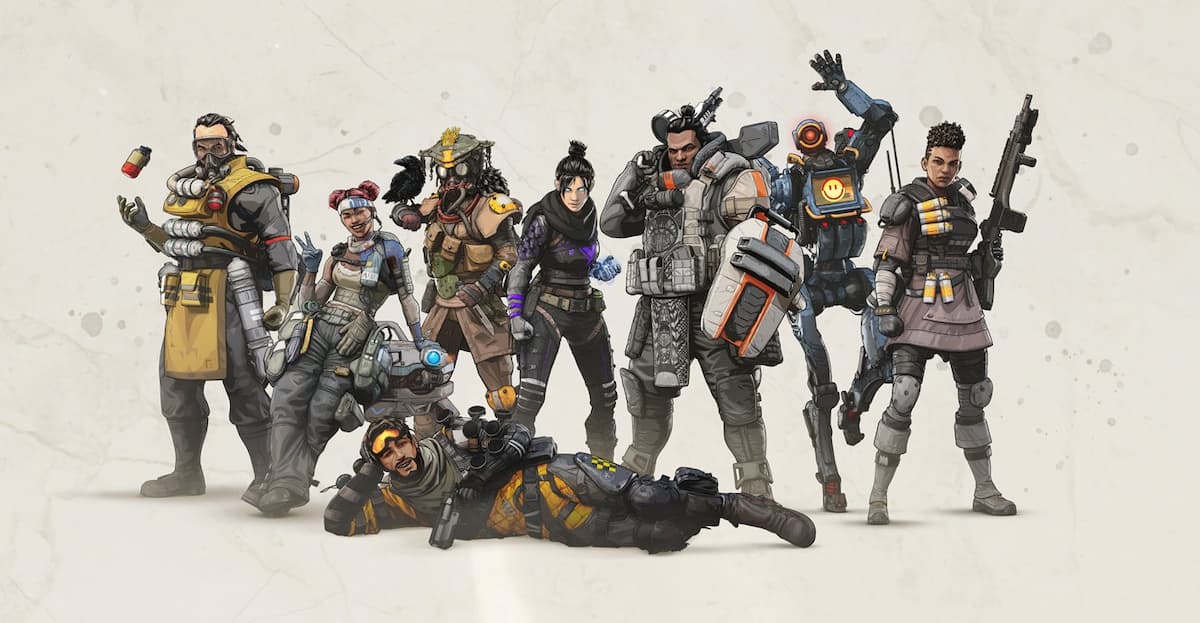
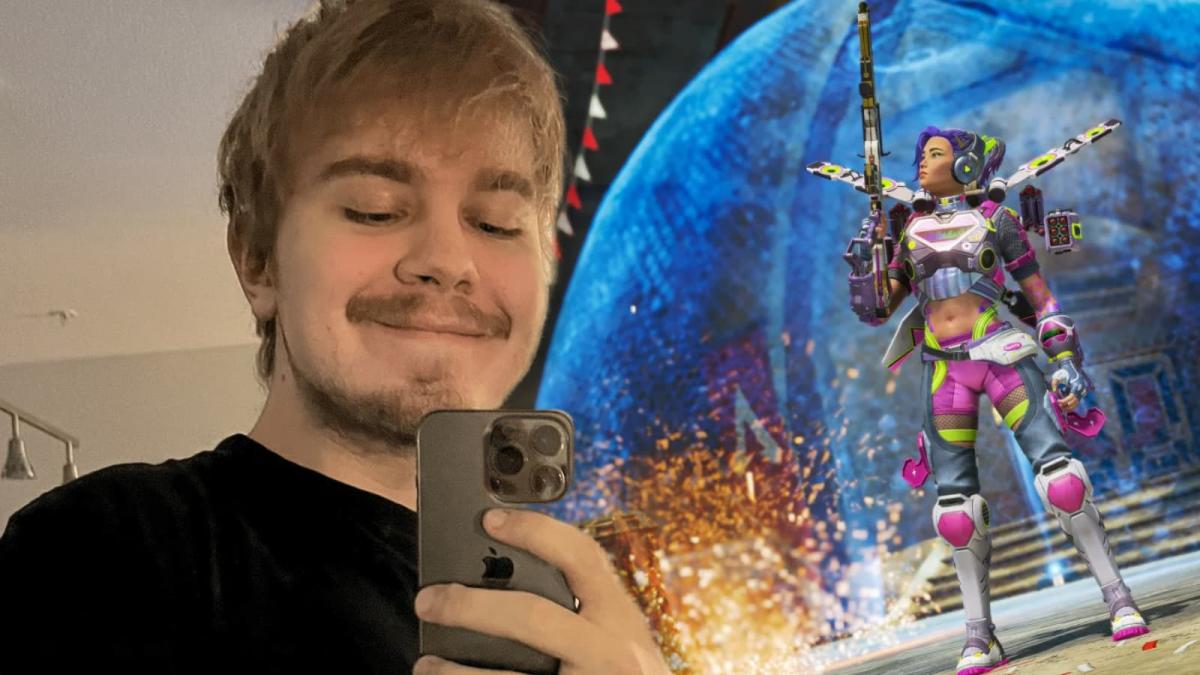


Published: Apr 5, 2024 09:12 pm